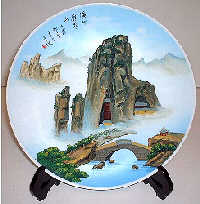
Ousu, known as an "oil-clay sculpture" and praised as a "stereoscopic painting", is a traditional artwork specially produced in Wenzhou of Zhejiang Province. Research shows that the art form was developed by assimilating the fabricating techniques of lacquerwork on the basis of ancient traditional clay sculpture.
History
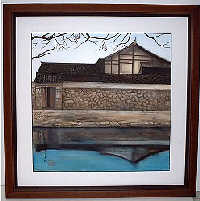
A piece of Ousu from the Song Dynasty excavated in Wenzhou -- the oldest Ousu piece unearthed thus far -- suggests that the art has a history of at least 900 years.
For centuries,Ousu artworks were mainly Buddha and gods intemplesor home decor, such as furniture and dowery. With a single color orgild and silver paintings, the art was rather rough for some time.
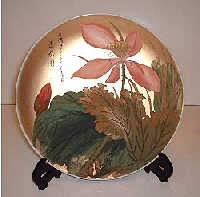
After the founding of new China,Ousu artists made great improvements to the art while carrying forward traditional techniques. They ingenuously combined the pile sculpturing, painting and carving techniques to develop Ousu art into a comprehensive industrial art.
In 1959, Xie Xiangru, who had worked in Ousu for nearly 50 years, added mineral pigments to oil clay, producing a rich and colorful material endowed with varied colors and a strong "attaching" capability.Ousu art ushered in a new era with its new firmer and more durable material, which is also fade resistant.
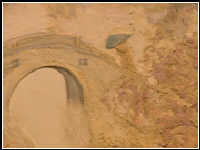
Modern Ousu artworks have become much more varied to include frescos, hanging screens, furniture and jewelry boxes. In 1972, the late premier Zhou Enlai spoke highly of the "Shaoshan" -- an Ousuhanging screen placed in the terminal hall of the Hangzhou Airport.
Production

The basic ingredient of Ousu is a mixture of tung oil and clay. The technique of pile sculpting is employed in making Ousu artworks, which are used to decorate temples and fanes. In Ousu, folk artists usually use pile sculpturing to create figures and sceneries on flat plates or walls, much like with reliefs and paintings.
Characteristics
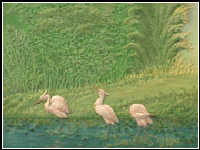
The most distinctive characteristic of Ousu is that it is a combination of both sculpting and painting -- two different art forms with their own distinct characteristics. Endowed with the benefits of round carving and reliefs, in this sense it is sculpture art. On the other hand, it also assimilated the techniques of Chinese and western painting, especially western theories concerning the application of beam and color. Therefore,Ousu also has a style unlike that of any sculpture.
Another obvious characteristic of Ousu is its strong artistic communicability, which is achieved by employing colors to depict the intensity of the beam, as well as the quality of the basic hue. This is similar to the realist technique in western painting. Fromthis point of view,Ousu is not only an ancient folk art, but also a young modern art that gradually reveals itself.


Two Ousu artworks in the Great Hall of the People -- "Panorama of West Lake" and "Autumn Scenery of Yandang" -- respectively fully display the consummate workmanship and the rich techniques of expression.

